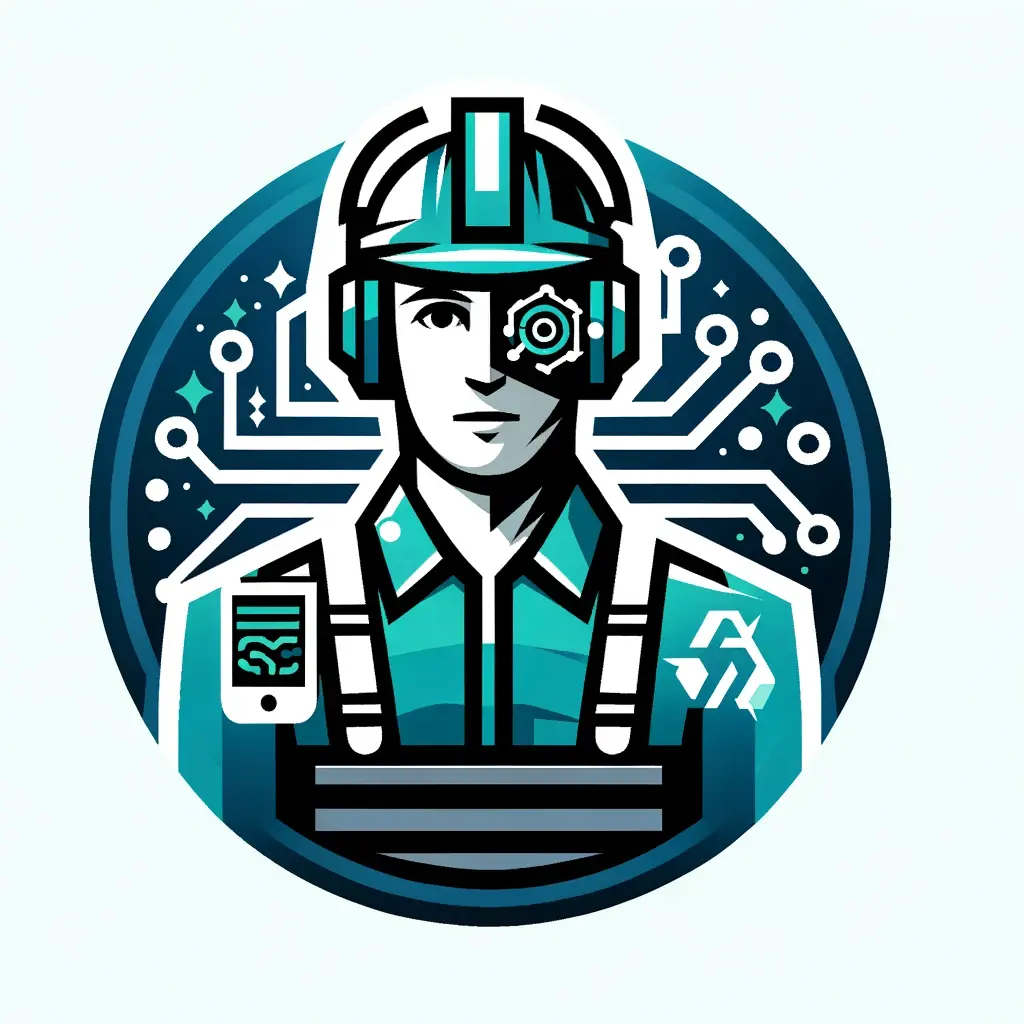Building on our understanding of the historical context and the current state of the waste disposal industry as presented in Part One of our series, this post explores a few of the important technological innovations shaping the sector and confronting today’s garbios. As we review these advancements, we keep in focus the crossroads faced by smaller operators amidst the push for digital transformation.
Digital Route Optimization with Smart Devices
The waste management industry has witnessed a significant technological shift in route optimization methods. Sophisticated software solutions have been available for decades now, leveraging GPS mapping technology and advanced algorithms to plot the most efficient routes for waste collection. Even more significant, however, we believe, is the advent of smart mobile devices, such as tablets and smartphones.
Historically, and even to the current day, two-way radios have served as the backbone of communication between dispatchers and drivers. These radios facilitate basic, real-time interaction but offer limited capabilities. With smart devices this aspect of waste management has been revolutionized. These smart devices enable a level of real-time communication that was previously unattainable. Dispatchers can now send service orders directly to drivers, who receive these updates instantly on their in-cab devices. This shift not only streamlines communication but also enhances the accuracy and efficiency of service delivery.
One of the most significant benefits of these smart devices is their ability to track a driver’s location in real-time. This feature allows dispatchers to monitor progress and make adjustments to routes as needed, based on traffic conditions, service delays, or emergency pickups. Furthermore, the devices enable the plotting and charting of stops for predefined route schedules, assisting drivers to follow the most efficient route paths possible.
As drivers move about completing their work, these devices can capture a multitude of data points. This information includes time stamps at each stop, the volume of waste collected, the distance traveled between stops, and more. The data collected is invaluable for analyzing operational efficiency and identifying areas for improvement, ultimately leading to improved service quality.
For smaller operators, the cost of implementing such sophisticated systems can be a barrier to adoption, and the transition from traditional methods requires both financial investment and a steep learning curve. Further muddying the ROI waters is the on-going reliance on third-party technology providers for implementation, training, maintenance, and support. This dependency is a risk that is easily missed or ignored. Over time, the incentives of the technology providers and partners, to grow their sales by raising their prices or by selling ever more high-tech solutions, for example, may no longer align with the business development goals of the garbage haulers using the technology to better serve customers and strengthen their own businesses.
The Internet of Smart Things
The concept of the Internet of Things (IoT) refers to the growing network of physical objects that are connected to the internet, allowing for data exchange and automation in ways previously unimaginable. IoT in waste management finds some of its best applications when it merges the technology with everyday operations. A key such integration is the use of on-board cameras and sensors on “smart” trucks, which, in addition to enhancing operational efficiencies, have opened up new avenues in data capture and analysis.
On-board cameras play a pivotal role in safety and operational efficiency. These cameras, often positioned to capture a 360-degree view, provide drivers with crucial visibility in blind spots, particularly behind the truck, which is essential for safe maneuvering in urban and residential areas. Beyond safety, these cameras record the truck’s activities and movements, offering valuable insights into daily operations. This footage can be instrumental in analyzing route efficiency, driver behavior, and even in incident investigations, providing tangible evidence in the case of accidents or disputes.
Sensors on smart trucks have revolutionized the way those waste management companies who have embraced them approach their daily routines. These sensors can monitor various aspects of the truck’s performance and load. For instance, sensors can monitor vehicle health and predict maintenance needs. They can track the fill-levels of the truck, ensuring optimal usage of space and timely disposal. This data is not only beneficial for route planning but also for understanding waste generation patterns in different areas, allowing companies to adjust their services accordingly.
Smart bins and dumpsters equipped with sensors are another prime example of IoT in waste management. These bins monitor waste levels and can signal when they need to be emptied. This technology enables more efficient collection schedules, prevents overflow, and can also identify the type of waste being deposited, helping in waste segregation at the source.
The data captured by these technologies extends beyond the immediate benefits of efficiency, safety, and compliance. The accumulation and analysis of this data over time can lead to predictive insights. By understanding trends in waste collection and truck performance, companies can forecast future needs, tailor their services more precisely, and even preemptively address maintenance issues before they lead to downtime.
Large waste management companies have embraced these IoT-enabled systems, attracted by their potential to streamline operations and reduce costs. However, for smaller firms, the picture is more complex. The cost of implementing such technology can be prohibitive, and the direct, short-term benefits may not always justify the investment. In addition, the motivation to stick with tried-and-true methods is not just a matter of financial constraint; it’s also a reflection of the practical realities and scale at which these smaller firms operate.
ERP, CRM, and The Cloud Revolution
The adoption of Enterprise Resource Planning (ERP) and Customer Relationship Management (CRM) software represents another significant step forward in the digital transformation of the waste management industry. These digital platforms, essential for managing customer interactions, accounting and billing processes, and communication, have become increasingly common. By streamlining these critical business operations, ERP and CRM systems greatly enhance the efficiency and effectiveness of sales, accounting, and customer service.
The broader context of this digital transformation is the emergence of cloud computing and Software as a Service (SaaS) models. Cloud computing allows businesses to access and store data over the internet, rather than on on-site servers or personal computers. This technology has revolutionized the way companies operate, offering scalability, flexibility, and cost-efficiency. SaaS, a subset of cloud computing, provides access to applications via the internet, eliminating the need for installation and maintenance of software on individual computers. This model has opened up opportunities for businesses of all sizes to utilize advanced software solutions without the traditional barriers of high upfront costs and complex IT infrastructure.
For smaller waste management firms, the advent of cloud computing and SaaS offerings presents a unique opportunity. These technologies level the playing field by offering access to high-end business applications without requiring substantial IT investments. The pay-as-you-go subscription model typical of SaaS applications makes it easier for smaller companies to adopt advanced software solutions, aligning their costs more directly with their usage and business scale. Additionally, cloud-based systems offer flexibility and scalability, allowing these companies to adjust their technology use according to business growth and changing needs.
The use of cloud-based applications can significantly enhance productivity and operational efficiency for smaller waste management firms. These systems automate many manual processes, from customer data management to billing, freeing up valuable time and resources that can be redirected towards more directly mission-focused business activities. Moreover, the data analytics capabilities inherent in many of these platforms provide insightful business intelligence, helping these companies make more informed decisions.
Challenges and Considerations
These technological innovations, while promising, bring forth several challenges. Smaller operators often face hurdles in integrating these new systems into their existing workflows. There is also the challenge of training staff and adjusting to a new way of operating, which can be a significant cultural shift for companies that have long relied on more traditional methods. The high cost of implementation, the need for technical expertise, and the uncertainty of return on investment are significant hurdles for smaller waste management firms. In this context, smaller operators find themselves weighing the potential benefits of these innovations against their practicality and alignment with business development goals.
The industry’s move towards digital transformation must be balanced with the recognition that not all advancements are feasible or necessary for every player in the field. As we continue, we will explore how these technologies can be adapted or alternatives sought to ensure that the industry’s technological evolution contributes positively to business growth, stability, and even anti-fragility. Stay tuned for Part Three of our series for more about this.


